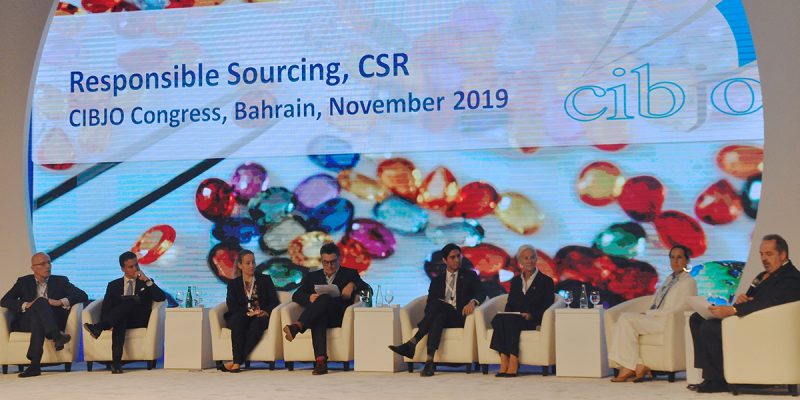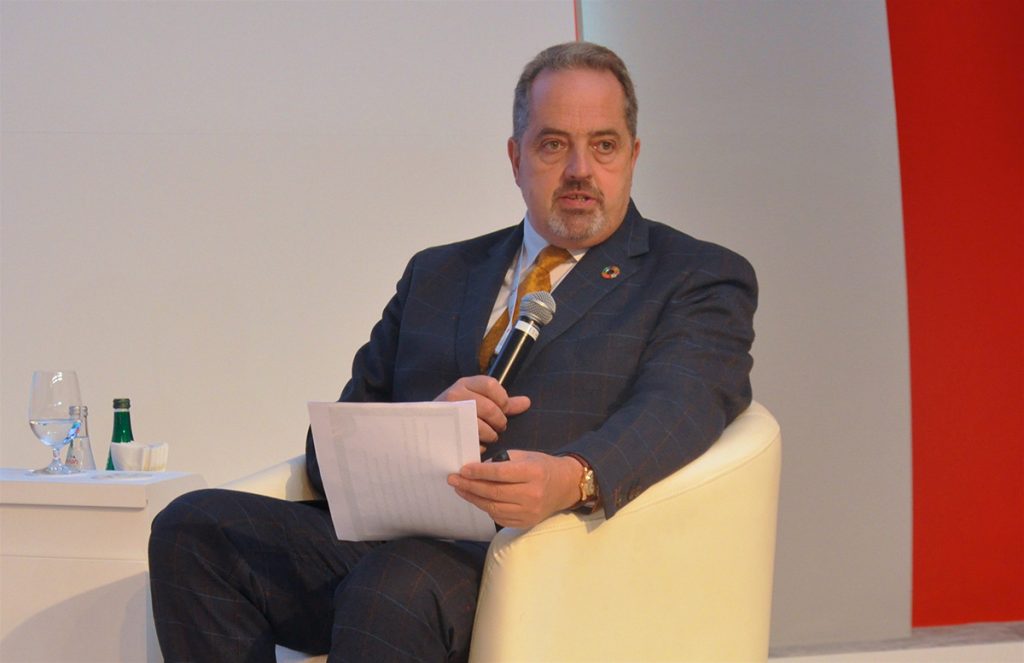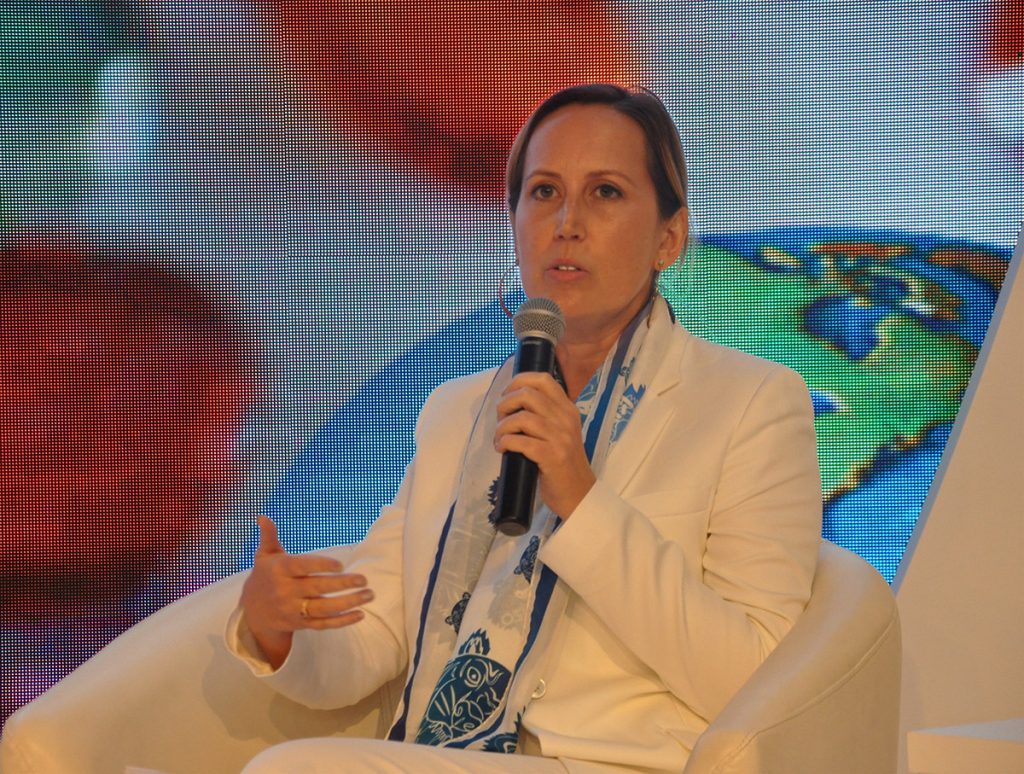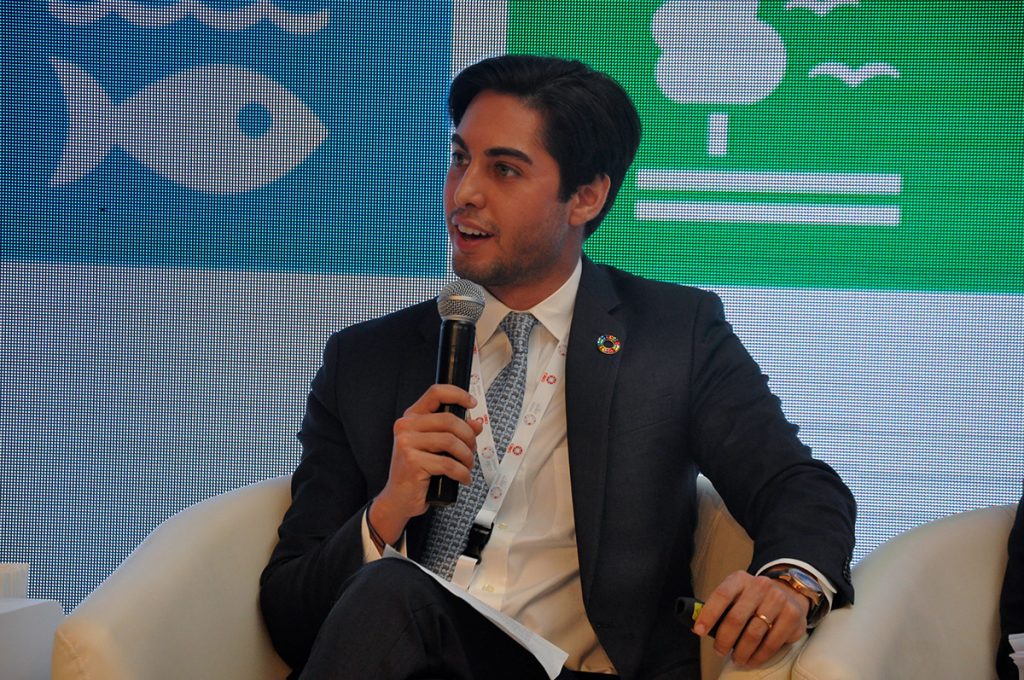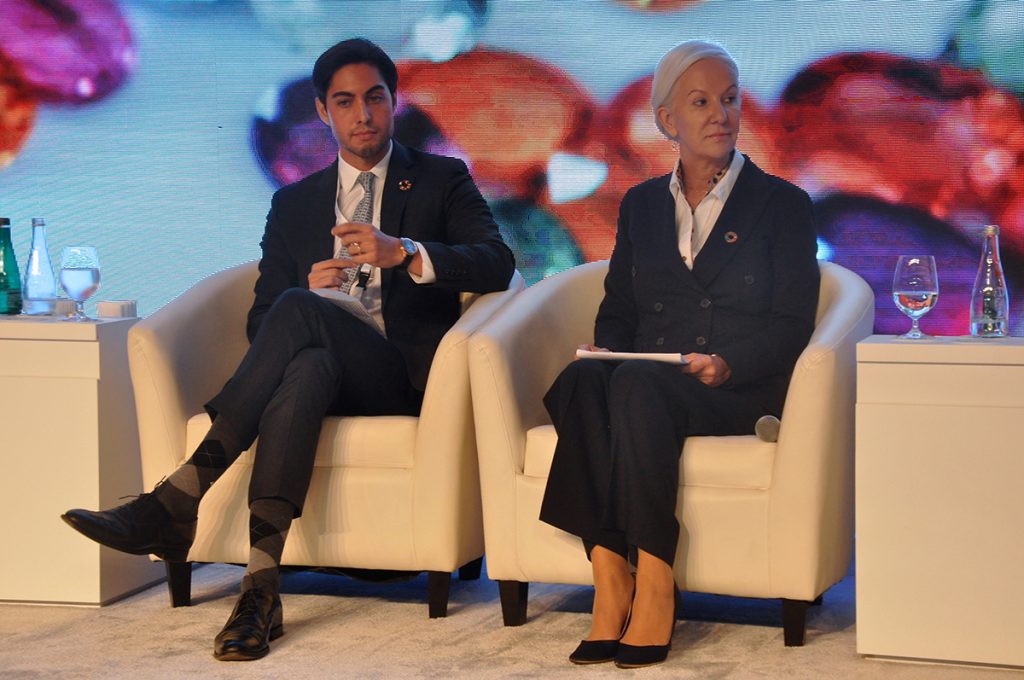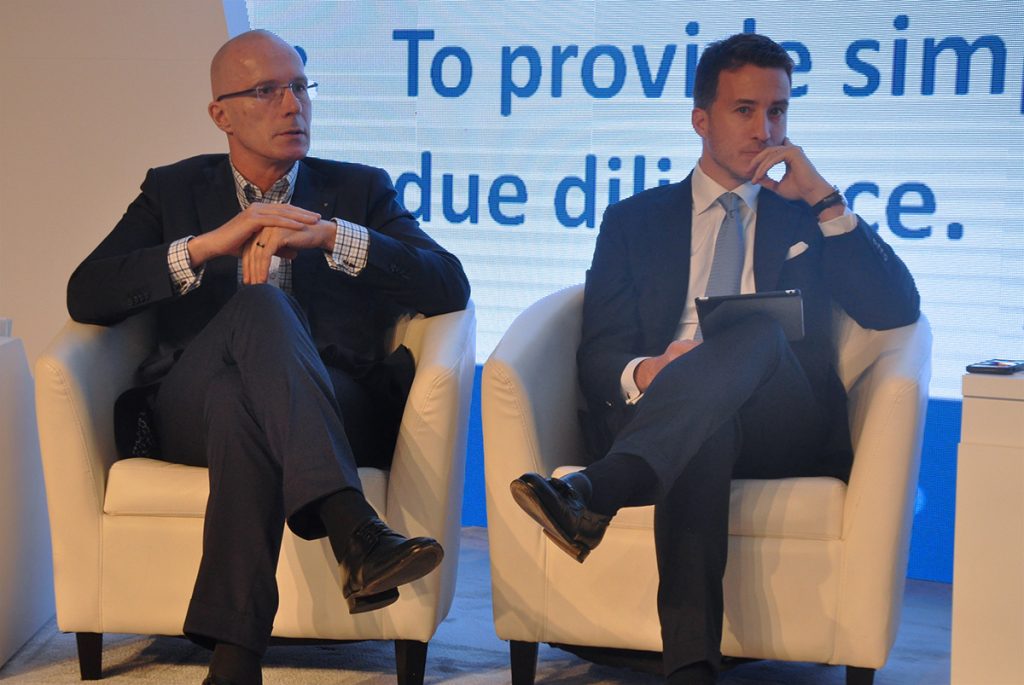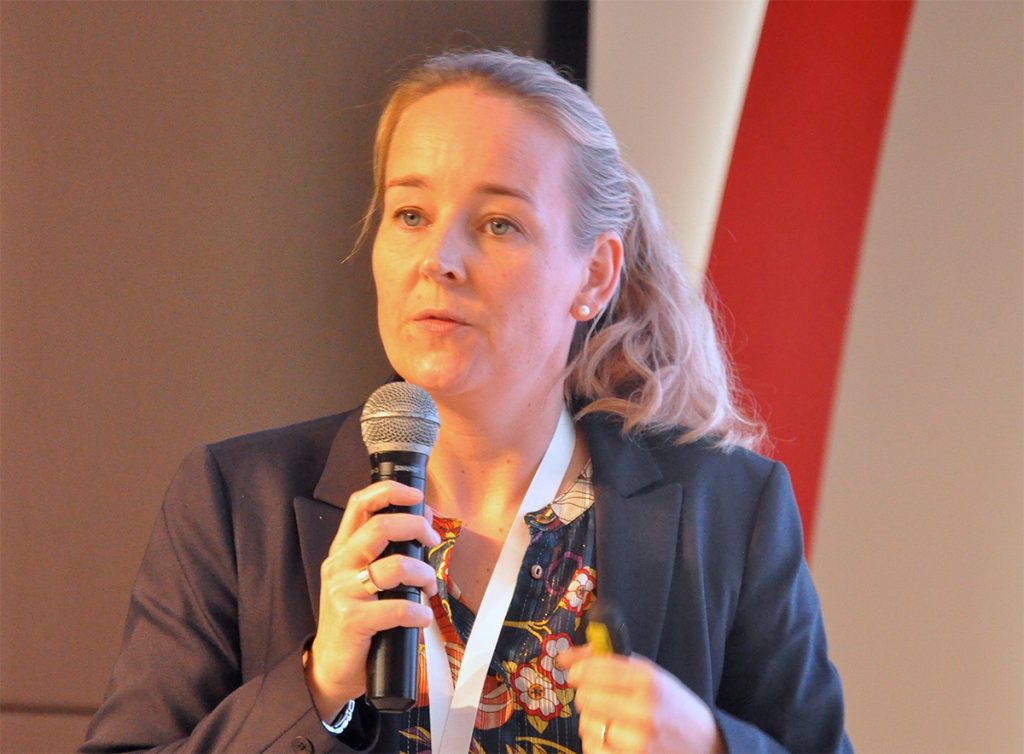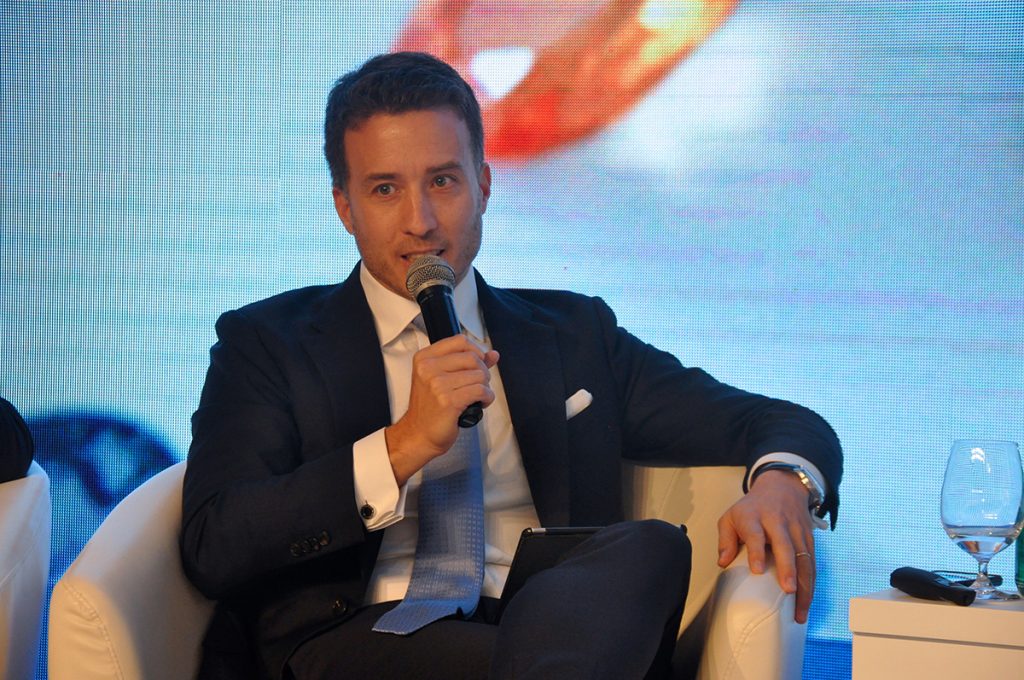ABOVE: The Responsible Sourcing Commission in session on November 19 at the 2019 CIBJO Commission. Chairing the session is Philip Olden, the commission’s president.
NOVEMBER 19, 2019
The Responsible Sourcing Commission held it first official session on the opening day of the 2019 CIBJO Congress in Bahrain on November 19, after the body was formally established at the conclusion of the CIBJO Congress in Colombia in 2018.
Philip Olden, President of the CIBJO Responsible Sourcing Guidance Commission, said the body was established with the primary aims of supporting and providing guidance to CIBJO members, especially manufacturers, retailers and distributors. It also aims to reinforce United Nations Sustainable Development Goals (SDGs), protect the reputation of the industry to fulfil a care of duty responsibility. Many of the UN SDGs are applicable to our industry, he commented.
“We acknowledge there are many challenges: there are different levels of sophistication among small and medium sized firms, and fragmented and multi-layered supply chains. We recognise that this is a roadmap and path of continuous improvement.”
CIBJO published the Responsible Sourcing Guidance document in October 2018 to provide an assurance of responsible sourcing. It is based on OECD Due Diligence Guidance, supports the Kimberley Process (KP) and UN guiding principles on human rights, and follows the OECD 5 step framework for supply chain due diligence.
The Commission’s Blue Book was published in December 2018, and approved by the CIBJO Board of Directors. He said that a responsible sourcing toolkit being created together with the Dragonfly Initiative is due for completion by the end of the year.
Mr. Olden said there was a range of challenges, such as fragmented supply chains and different levels of sophistication.
The jewellery industry has been the focus of scrutiny by civil society groups and government so it was incumbent on the jewellery industry to show that it is taking steps to protect the reputation of the industry and has a duty of care. CIBJO has provided simple guidance for industry to carry out due diligence. “We are there as a roadmap, not a standard or certification system, since not everyone has the ability to implement all the guidance immediately.”
The first panel member to comment was Tiffany Stevens, CEO and President of the U.S. Jewellers Vigilance Committee (JVC) who provided an update on the U.S. industry. The Federal Trade Commission (FTC) guides relate to jewellery advertising in the United States, and doesn’t relate to ethical supply chains. “Responsibility and sustainability in America is done by the big retailers who can write their own guides,” she said.
As for the JVC, it asked the FTC regarding consumers who want to buy ethically sourced jewellery and it pointed the JVC to the FTC’s Green Guides that apply to all industries that make any environmental claim.
“As climate change has gone mainstream, we see that responsibility and sustainability are taking a foothold in the US. Not so much in jewellery but in fashion and food. I would say that you must be compliant with federal anti-money laundering laws. If you are a foreign firm selling more than $50,000 of goods you are subject to U.S. laws. I would also say to pay special attention to California which is leading the country in consumer protection regulations.”
Iris van der Veken, Executive Director of the Responsible Jewellery Council, explained that the body was founded in 2005, and now has 1,200 member companies, from mining to retail. It has recently added the coloured gemstones and silver businesses to its membership.
She spoke about the key messages being trust is the ultimate currency since consumers care and want to understand how a product is made. Building trust required an integrated approach. “The modern world is transparent, so people want to know where materials are from. She also spoke about the importance of transformative partnerships.
Felipe Morgado, UN Global Compact: said the SDGs asked firms to commit in areas of human rights, labour, anti-corruption and the environment which are the main themes behind the 17 SGDs.
“The UN provides the framework for companies to integrate the SGDs in their business models. The UN Global Compact Academy gives access free to all employees about how to work sustainably,” he said.
Assheton Carter, of The Dragonfly Initiative said most business are small and medium-size enterprises (SMEs) especially in the jewellery industry. Being traceable right back to the mine is not easy. “The expectation to provide traceability is a high bar. Millennials have high expectations in this respect, but are not so willing to pay the high prices that this entails.
“Although we have to move to standardisation, small businesses don’t have big budgets for experts or the same carbon footprints as bigger firms so this needs to be tailored to their operations. We have created standards for small firms that are customisable. This is all free and will be on the CIBJO site by the end of the year. We have to be practical and adapt to the situation the ground.”
The Dragonfly Initiative, through the Coloured Gemstone Working Group that it facilitates, is currently working with CIBJO on a toolkit to help smaller companies implement the guidelines outlined in the Responsible Sourcing Blue Book.
Lea Ravnkilde Moller, Orbicon WSP, an expert in climate adaptation and urban development from Denmark said that sustainably development can be very difficult but that they should be able to adapt to some, or all, of the 17 SGDs. “One size fits all is not possible, so you can adapt it to your particular context.”
Marco Carniello of the Italian Exhibition Group and Michel Loris-Mellikof, CEO of BaselWorld, agreed that trade shows can be the platform for conveying messages and connecting with SMEs which are important to trade fairs. T
There must also be real commitment, said Mr. Carniello. “The IEG became an active participant in the UN, showing that we are not just hosting panels we embrace commitments to make a difference to the industry.
Mr. Loris-Mellikof added: “We must be realistic about what we require from our exhibitors. We are working with CIBJO to define objectives.”


